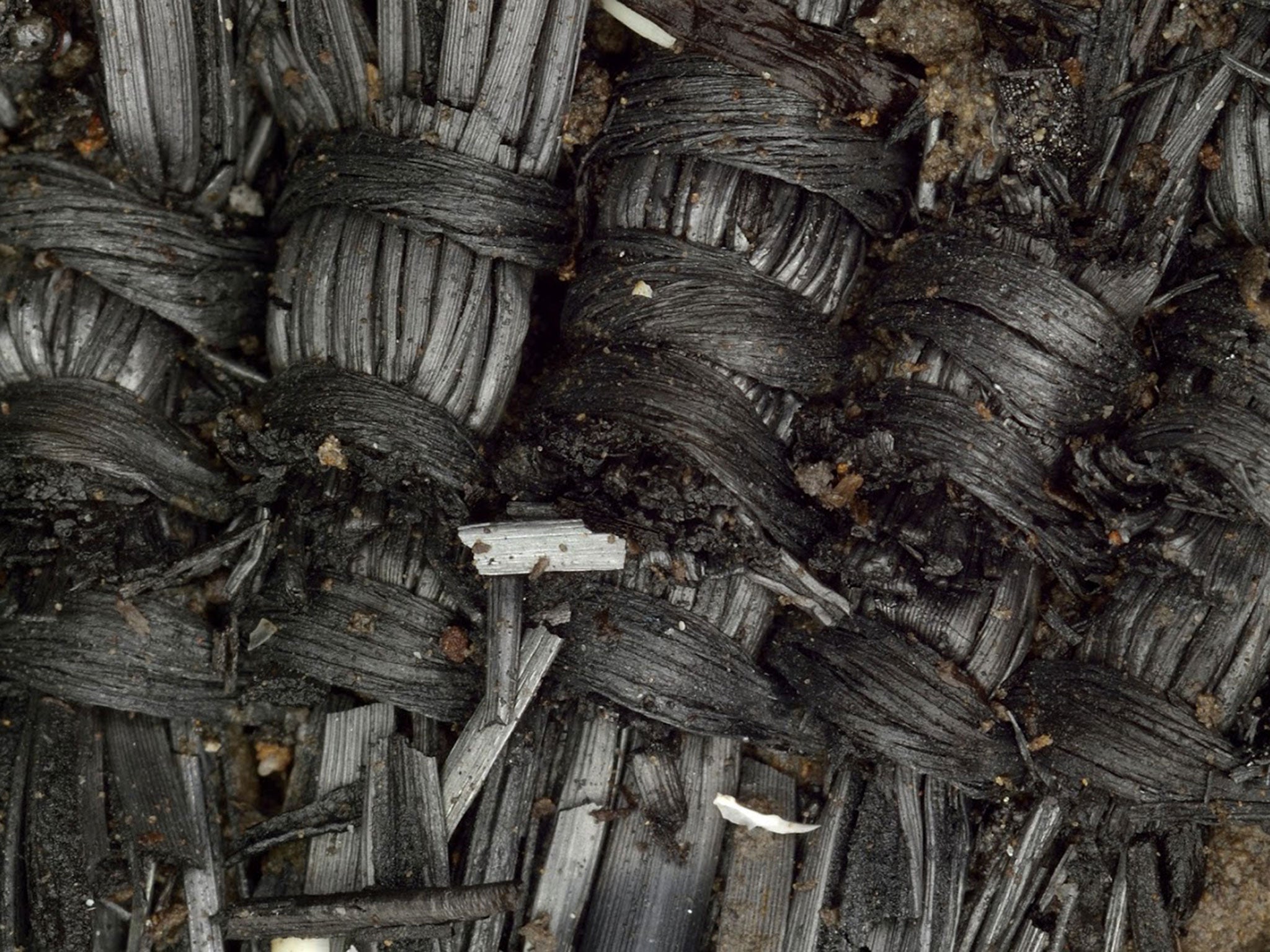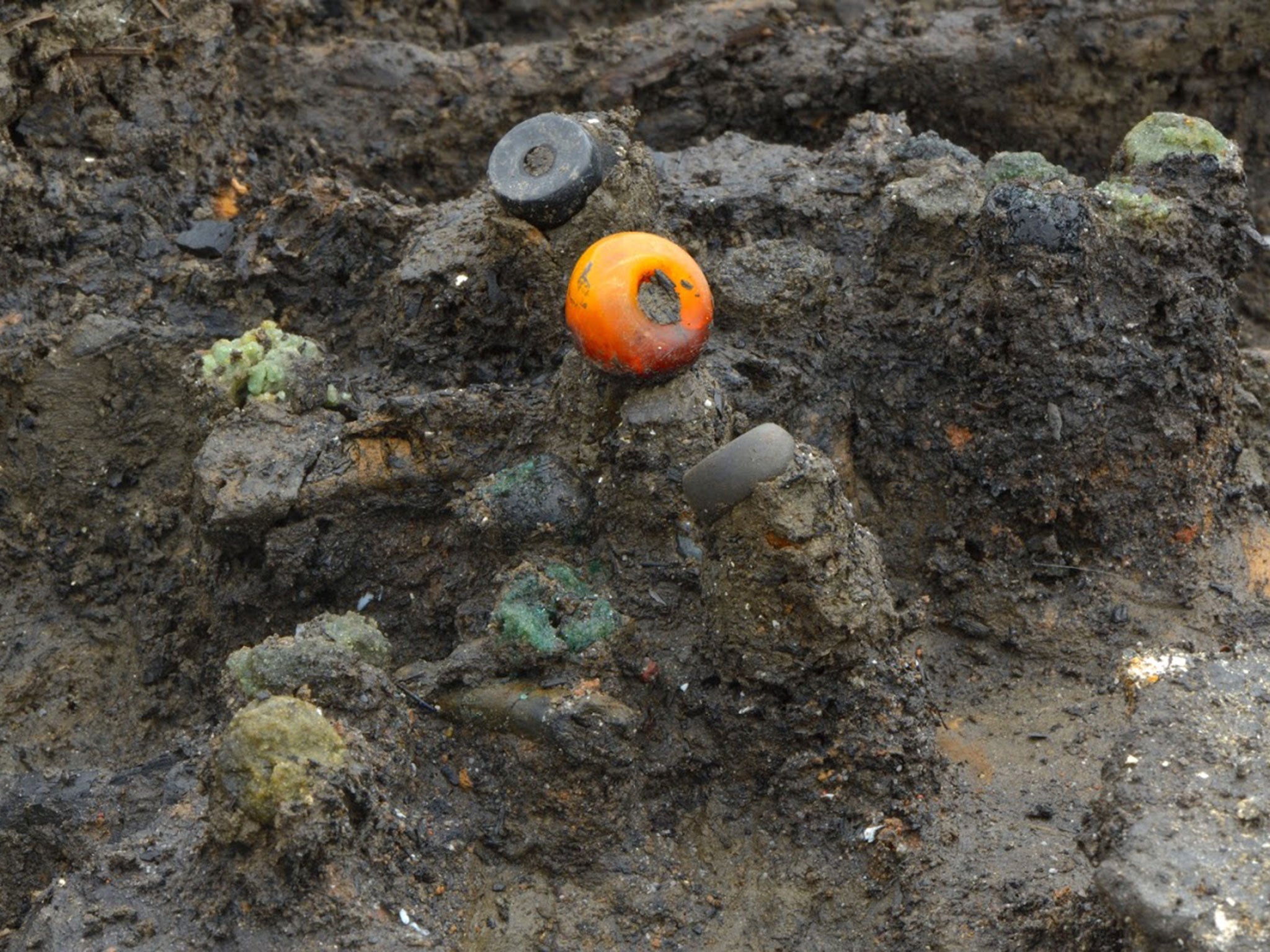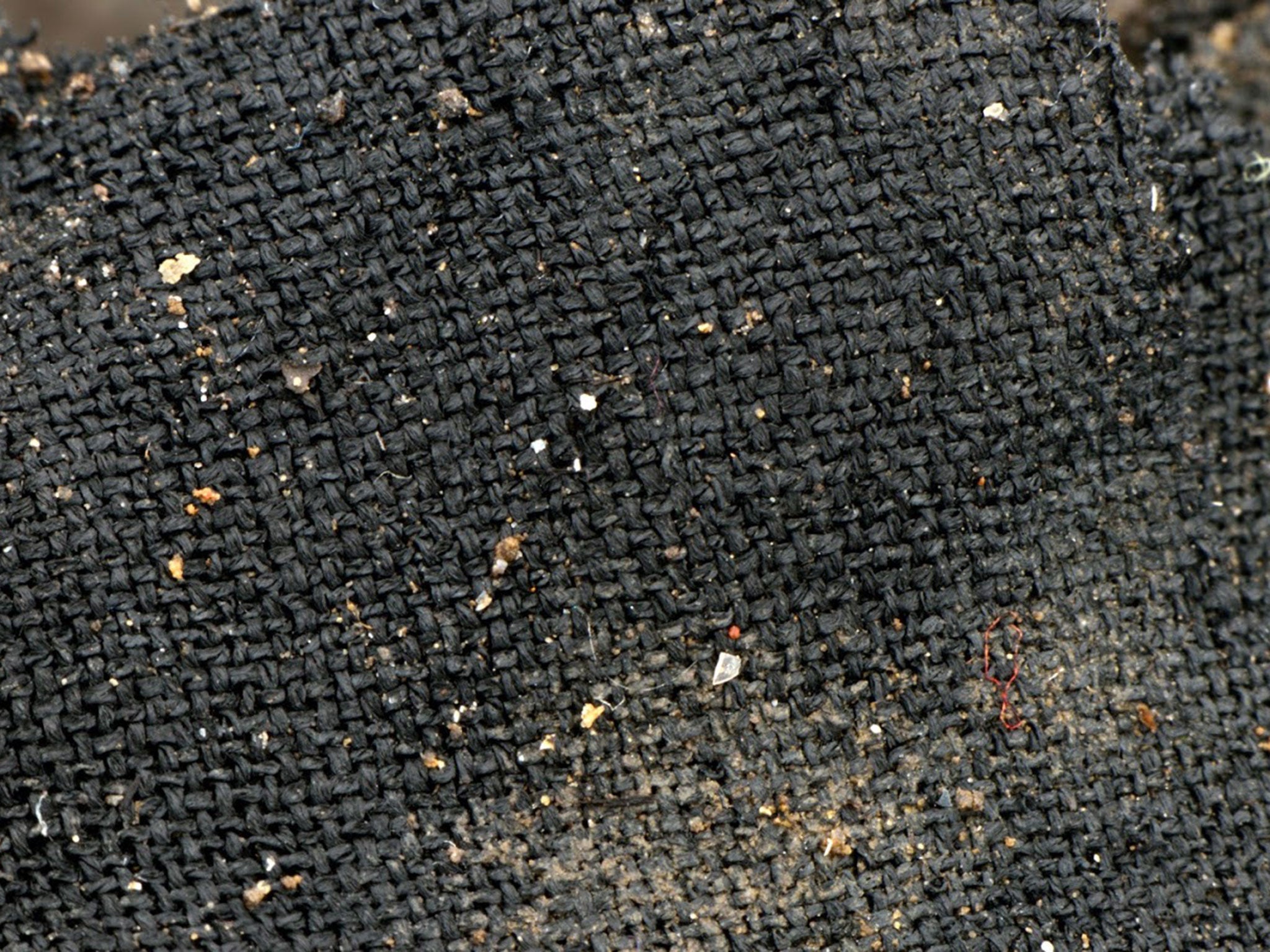Discovery of vast treasure trove of fine textiles shows importance of fashion to Bronze Age Britons
3000-year-old fabrics are among finest from period ever discovered in Europe - and are of huge international significance

Remarkable archaeological evidence from the site of a prehistoric village in eastern England, suggests that Bronze Age Britons had a liking for high-end fashion.
Excavations, 30 miles north-west of Cambridge, have unearthed the earliest examples of superfine textiles ever found in Britain. They are also among the most finely-made Bronze Age fabrics ever discovered in Europe as a whole – and are of huge international significance.
Archaeologists from the University of Cambridge’s archaeological unit have so far unearthed more than 100 fragments of textile, unspun processed fibre and textile yarn at the site. Some of the yarn is of superfine quality – with some threads being just 100 microns (1/10 of a millimetre) in diameter, while some of the fabrics themselves are so finely woven that they have 28 threads per centimetre, fine even by modern standards. It’s likely that some of the fragments of textile are from items of clothing.
Originally, some of the textiles must have been of very substantial size – because they had been folded, in some cases in up to 10 layers. If made to be worn, these folded fabrics may well have been large garments, potentially, capes, cloaks – or even large drapes, perhaps similar to those known from elsewhere in the ancient (and sometimes modern) worlds – the ancient Greek chiton, the Roman toga and the Indian sari. A drape folded into 10 layers for temporary storage would have served as a substantial garment – potentially up to 3 metres square (i.e. 9 square metre).
Most of the superfine fabrics from the site – Must Farm near Whittlesea, Cambridgeshire – were made of linen. When the village was flourishing around 3000 years ago, textile manufacture seems to have been a key craft practised there. Hundreds – possibly thousands – of flax seeds have so far been found on the site (some of which had been stored in containers). Flax is the crop which produces the fibres used in linen production.

What’s more, the presence on the site of unspun processed fibre, yarn and finished textiles all strongly suggests that the village was involved not only in using textiles but also in manufacturing them. Timber fragments with delicate carpentry, found during the Historic-England-funded excavation may well be the remains of looms. Indeed fired clay loom weights have been unearthed there.
The archaeologists have also discovered that Bronze Age Britons also had a penchant for a different type of fabric – made of processed nettle stems (from a locally available non-stinging subspecies of nettle – today known as fen nettles). Unlike flax, nettles grew wild and therefore did not need to be cultivated. What’s more, well-made nettle textile was often particularly fine and silky.
But nettles may well have had additional benefits – at least in the eyes of the users of the fabrics.
In traditional ancient folklore, nettles of various types were often regarded as having magical powers. They were seen as being able to protect both humans and animals from sorcery and witchcraft. What’s more, garments made of nettles were therefore sometimes seen as protecting their wearers from evil. Indeed one of Europe’s most famous folktales – the Wild Swans (written by Hans Christian Andersen, but thought to be based on traditional folk stories) – reveals how shirts, made of nettle yarn, enabled their wearers to break a witch’s spell.
So far no evidence of any extensive patterns or coloured dyes have been found on any of the linen and nettle yarn textile fragments – although the edge of one piece of fabric (perhaps part of a shawl or cape) seems to have been decorated with fringes, rows of knots, and strips featuring different styles of weave. Certainly, dying the linen would have presented substantial technical difficulties – but bleaching it would have been much less challenging. It is therefore very likely that the naturally light brown linen was bleached to achieve a creamy white or possibly even dazzlingly pure white appearance. Basic bleaching of the fabric might well have been achieved with the use of a mixture of urine and milk or by simply laying out the fabrics on wet grass on a succession of sunny days.
The village appears to have been very prosperous, yet tragically short-lived.

As well as making (and presumably using) ultra-fine fabrics, at least some of the inhabitants wore exotic jewellery made of blue, black, yellow and green glass manufactured in the eastern Mediterranean region – probably in what is now the Syria or Turkey.
They lived in large well-built houses and had a wide range of tools and other possessions. So far, around 50 bronze axes, sickles, spears, swords, razors, hammers, tweezers and awls have been found along with some 60 wooden buckets, platters and troughs as well as around 60 well preserved ceramic bowls, mugs and storage jars. Dug-out canoes, and two wooden wheels have also been unearthed. The initial wheel discovery was reported on in The Independent in February
But the archaeological evidence suggests that this thriving and prosperous settlement was probably attacked, burnt and destroyed by its enemies less than a year after it was built.
In the five houses excavated so far, the population seems to have fled or been captured or killed, leaving all their possessions behind – meals half eaten, salted or dried meat still hanging in the rafters, garments neatly folded on or around well-made wooden furniture.
“It’s a bit like discovering the Marie Celeste. Everything is exactly as it was left. Only the inhabitants are missing,” said the director of the excavation, Mark Knight of the Cambridge Archaeological Unit.
“This site is providing the modern world with an image of daily life in the British Bronze Age that was until now beyond our dreams. It is only the very specific and unusual circumstances of the destruction of the settlement that has, paradoxically, allowed so much of it to be preserved intact,” he said.
Because the village had been set alight, large numbers of wooden, textile and other artefacts were charred – and because the houses were built on wooden stilts in a river (flanked by marchland), everything ultimately ended up underwater, where it was subsequently covered with silt and mud.
This rare combination of charring and waterlogging and natural burial under sediment has been responsible for the extraordinarily high levels of preservation.
Most of the artefacts have been found inside the settlement’s houses. So far, five of these large 6-8 metre diameter structures have been found at the site. Again, because of charring and subsequent waterlogging, around half of all the wall, roof and other timbers from these buildings have been preserved.
The excavation is being directed by archaeologist Mark Knight of the Cambridge Archaeological Unit, with textile research being carried out by textile specialist, Dr Susanna Harris of the University of Glasgow. Because of its national and international importance, the entire project is being funded to the tune of £1.4 million by Historic England and the owner of the site, one of the UK’s major brick-making companies – Forterra.
The finds include the largest group of prehistoric textiles ever discovered in Britain – and the largest collection of complete bronze, wooden and ceramic artefacts ever found in a British Bronze Age settlement.
Join our commenting forum
Join thought-provoking conversations, follow other Independent readers and see their replies
Comments